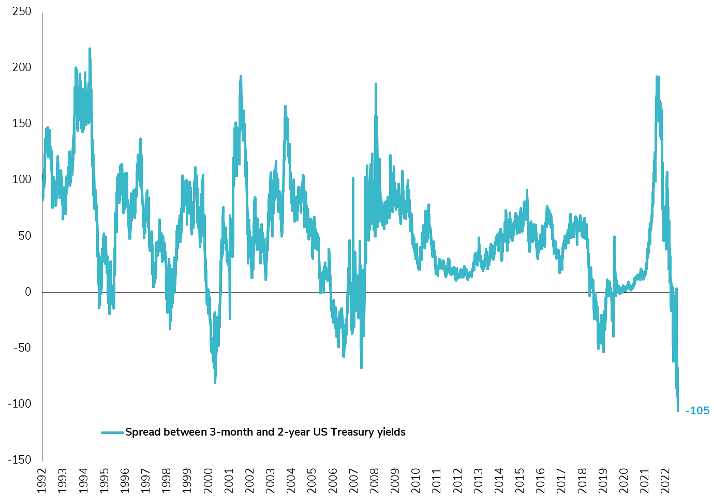What happened last week?
Rates: U.S. Treasuries performed well (+0.6%) last week, with the 10-year U.S. Treasury ending the week at 3.4%, down 7 bps. Mixed employment data (good BLS report vs. weak jobless claims) did not influence the yield curve too much as the 2-year U.S. Treasury yield fell 5 bps (and back below 4%), inverting the yield curve by only 2 bps. On the other hand, the spread between 3-month and 10-year U.S. Treasuries reached a new low at -157 bps. In Europe, government bonds started the month on a high note with a performance of +0.9%, with the German 10-year yield ending at 2.18%, down 11 bps on the week. Peripheral rates slightly underperformed core rates with a modest gain of 0.6%.
Credit: U.S. Investment Grade (IG) bonds continued to perform well, adding 40 bps to the 2023 performance (+3.9%). The rate component more than offset the slight widening of the credit spread (+3bps to 140bps). HY credit spreads widened by 10 bps to 465 bps, reflecting weak investor sentiment and activity in the HY primary market (nearly $8 billion of new issuance). In Europe, it was a similar week, with EUR IG having a strong start to the month (+0.8%) while EUR HY was up only 0.1%. European HY credit spreads widened by almost 20 bps due to the lower quality (CCC) and real estate sector (-1.2% on the week).
Emerging market: The Reserve Bank of India surprised the market by keeping its key interest rates unchanged at 6.5%, indicating that rates are already in restrictive territory. In China, the Caixin PMI Composite (54.5 vs. 54.2) confirmed the positive momentum of the Chinese recovery, while the Chinese real estate market appears to be stabilizing. Indeed, March data showed an increase in long-term loans for households, while new home sales by the country's 100 largest property developers rose by 30% yoy. Against this backdrop, emerging market indices have risen since the beginning of the month, with hard currency sovereign bonds rising 0.5% and dollar corporate bonds rising 0.7%. Credit spreads narrowed by 10 bps and 3 bps to 415 bps and 376 bps, respectively, for the EM sovereign and corporate indices.



.png)
